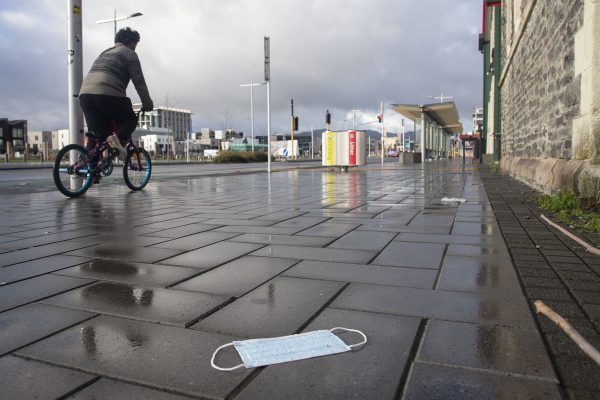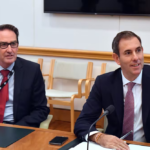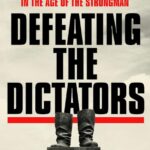New Zealand’s year of introspection

As the first full year of Jacinda Ardern’s second term as New Zealand’s Prime Minister, 2021 began with the promise of political continuity. The October 2020 general election left her Labour Party in a commanding electoral position. National, the leading opposition party, was in tatters, and a rapid succession of leaders would offer few answers to Ardern’s popularity.
Winston Peters’ New Zealand First Party, Labour’s main coalition partner since the 1997 election, failed to retain a single parliamentary seat. Able to govern alone if it had so wished, Labour nonetheless gifted portfolios to the Greens’ two co-leaders, and the Climate Change portfolio found James Shaw defending New Zealand’s unconvincing pathway to emissions reductions when he travelled to the COP26 climate change conference in Glasgow in November. But Labour put its own stamp on the government’s two main externally facing roles. In Foreign Affairs, Nanaia Mahuta succeeded the seasoned Peters, and in Defence, Peeni Henare replaced the enthusiastic Ron Mark.
As in term one, Labour’s big players remained focussed on domestic issues, particularly on the ever-changing COVID-19 pandemic. Grant Robertson — slated to be Ardern’s successor in the nearly impossible event she doesn’t go for a third term — retained the crucial Finance role, spending up to keep the economy and employment levels buoyant and to reduce the hardship facing low-income New Zealanders. Megan Woods continued to do a lot of the heavy lifting, often behind the scenes. Chris Hipkins developed a cult following with a memorable faux pas as Minister for COVID-19 Response, a role created on top of the challenging Health portfolio held in the ambitious hands of Andrew Little.
Ardern has had fewer leading Ministerial colleagues at her disposal than her Labour predecessors David Lange and Helen Clark. While New Zealand First’s populist and nationalist tendencies were never to her liking, the party offered some experienced hands. The cumulative result was an even greater reliance on one person — the Prime Minister herself. That included leading regular media updates on the pandemic alongside Director General of Health Ashley Bloomfield — the most prominent and popular civil servant in the country.
With the Ardern government more cautious than most of its international counterparts about opening borders and easing restrictions, New Zealand’s COVID-19 case and hospitalisation numbers remained low. At the end of August, the Delta outbreak coincided with rising vaccination levels. But while the tourism and hospitality sectors paid a price for the Ardern government’s caution, and many overseas New Zealanders were unable to return, public opinion gave opposition parties little scope to argue for a freewheeling approach.
When vaccine certificate legislation was rushed through parliament without due oversight, National leader Judith Collins was busy torpedoing her political future by trying to do the same to her main opponent. But that slugfest brought a fresh face onto the scene at the end of 2021. Chris Luxon, an acolyte of former prime minister John Key, is expected to put the government under more sustained scrutiny. Initial polling suggests National is recovering some of its lost ground, but Luxon still has an uphill job in contesting Ardern’s grip on New Zealand’s politics.
This grip also extended to New Zealand’s external affairs. Asserting that the APEC economies had rejected the temptations of COVID-19-era protectionism, Ardern took a prominent virtual role in New Zealand’s year in the chair. It was also Ardern, not Foreign Affairs Minister Nanaia Mahuta, who provided the definitive view on New Zealand’s conceptions of the region, approaches that are often seen as US rather than China-friendly.
New Zealand sees itself as part of the Indo-Pacific, Ardern indicated, so long as its conception remains inclusive, with ASEAN at the centre of institution building. Similarly the Prime Minister led New Zealand’s response to AUKUS, noting that Wellington’s view originated from its Pacific (rather than Indo-Pacific) connections. Yet Ardern also provided Wellington’s singularly most important take in 2021 on New Zealand–China relations by asserting in May that ‘the differences between our systems — and the interests and values that shape those systems — are becoming harder to reconcile’.
Ardern’s disappointment with Beijing’s use of its growing power helped calm an international storm in a teacup after Mahuta expressed doubts about the Five Eyes as a forum for criticising China’s human rights practices. Ironically, it was Mahuta who had earlier put Trade Minister Damien O’Connor in his place for suggesting Australia might have a better China relationship if it showed Beijing more respect.
Following some careful advance work courtesy of a visit from Australia’s Foreign Minister Marise Payne, Australian Prime Minister Scott Morrison gave the impression that Canberra had no questions about New Zealand’s position. At the end of the year, Mahuta joined her Five Eyes counterparts in presenting terse objections to Beijing’s approach in Hong Kong.
In successive speeches, Mahuta laid out a foreign policy philosophy grounded in the 1840 Treaty of Waitangi — the foundational agreement between Maori and the Crown — and emphasising indigenous perspectives. But it remained unclear how extensively Mahuta’s worldview would be operationalised by the Ministry of Foreign Affairs and Trade. Meanwhile, Peeni Henare gave the impression of being much more interested in his role as Associate Health Minister than the defence portfolio.
You could fit the world’s largest nuclear-powered submarine between the official arguments made in the 2021 Defence Assessment — that China was threatening New Zealand’s interests — and Henare’s trio of much friendlier principles. These diverging views did join up in the South Pacific, but that adds to the puzzle of why New Zealand was several steps behind its ally Australia in responding to the end of year crisis in the Solomon Islands. A similar gap has not been evident in the new year, however, in Wellington’s swift response to Tonga’s catastrophic volcanic eruption.
Perhaps the informal rule for Ardern’s Cabinet in 2021 was that if the problem was not COVID-19 and was not happening in New Zealand, the country lacked the bandwidth to make it a priority. If so, there is every chance that international events in 2022 will test that mindset.
This article was published by the East Asia Forum.
Robert Ayson has been Professor of Strategic Studies at Victoria University of Wellington since 2010 and works in close association with the Centre for Strategic Studies. He has also held academic positions with the ANU, Massey University and the University of Waikato, and official positions with the New Zealand government.













